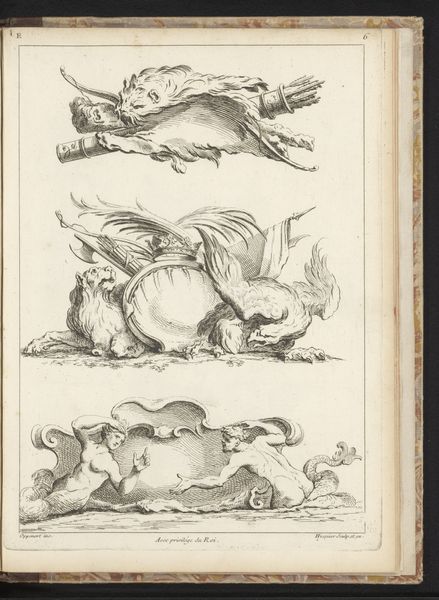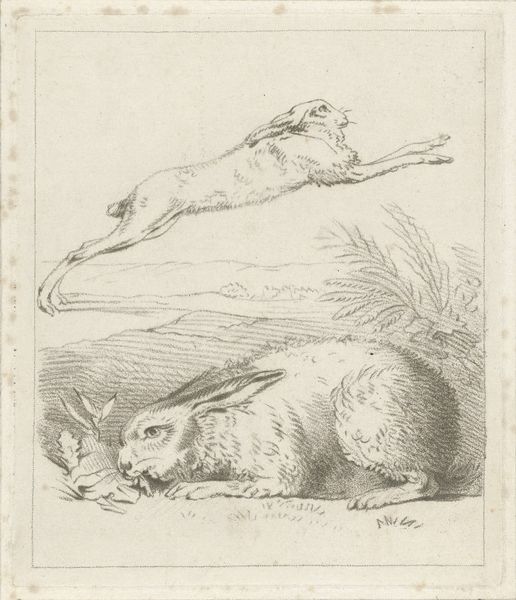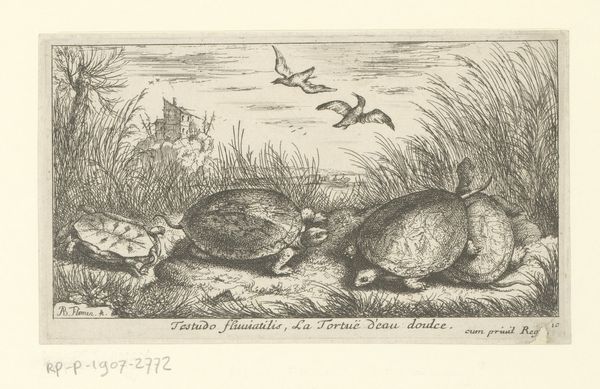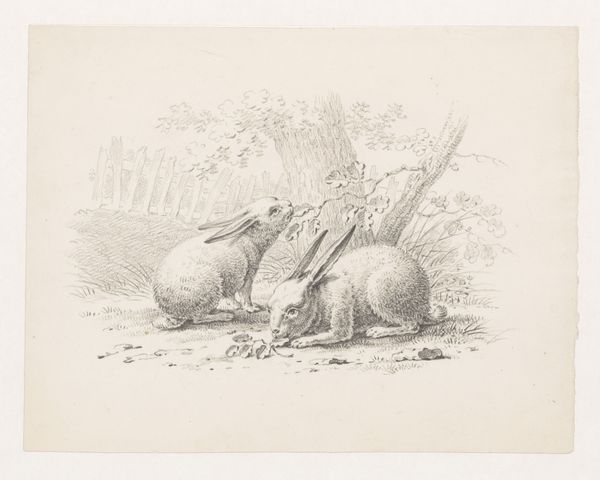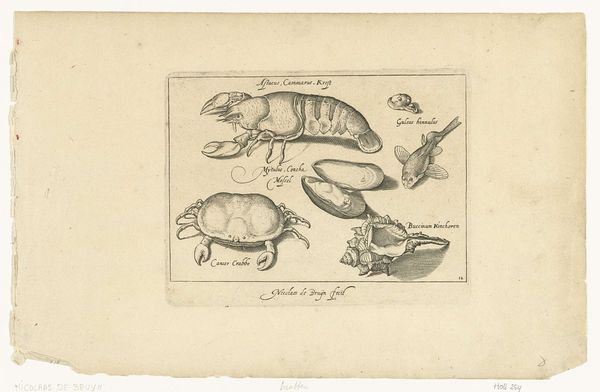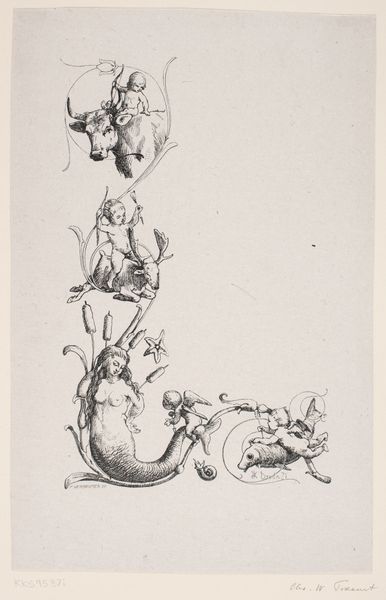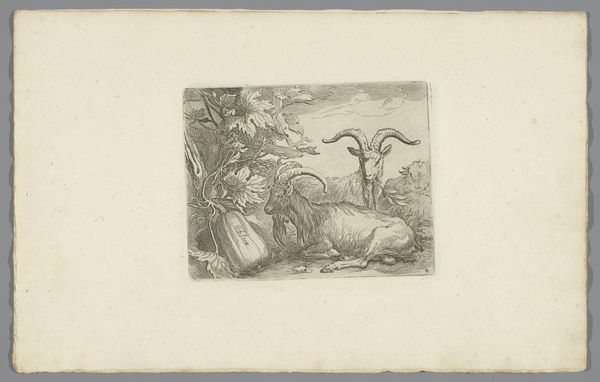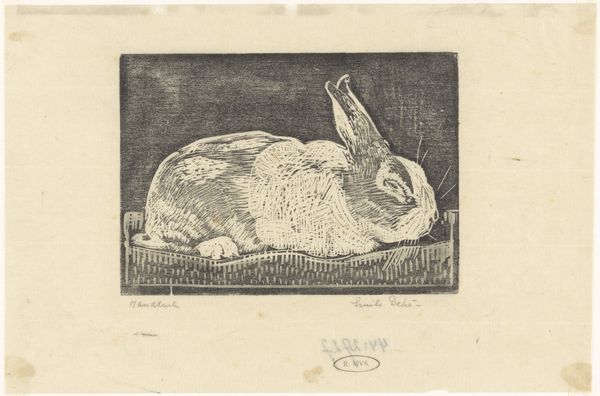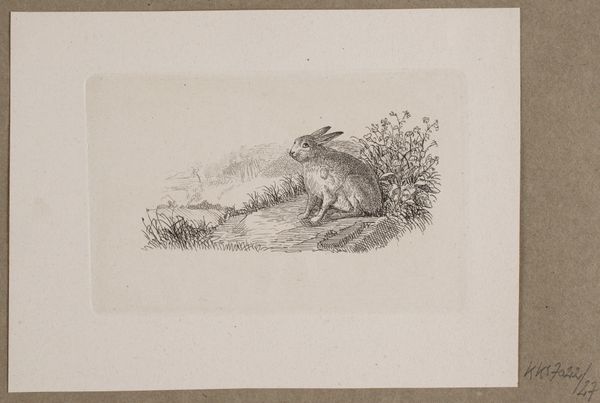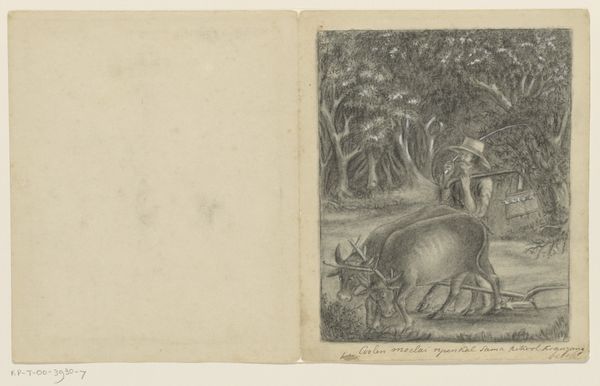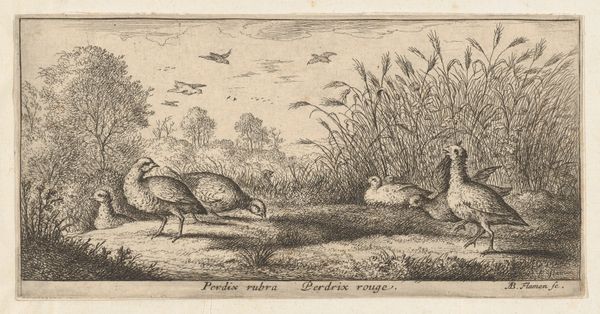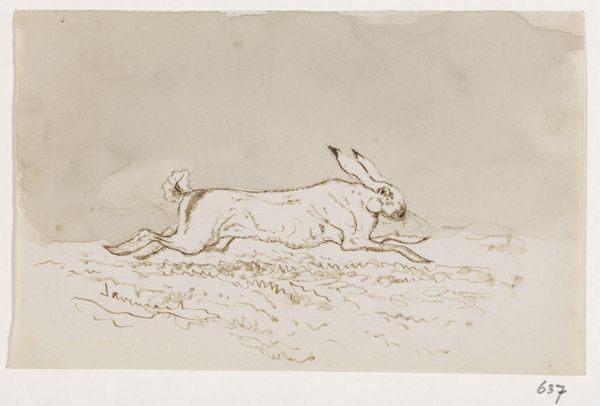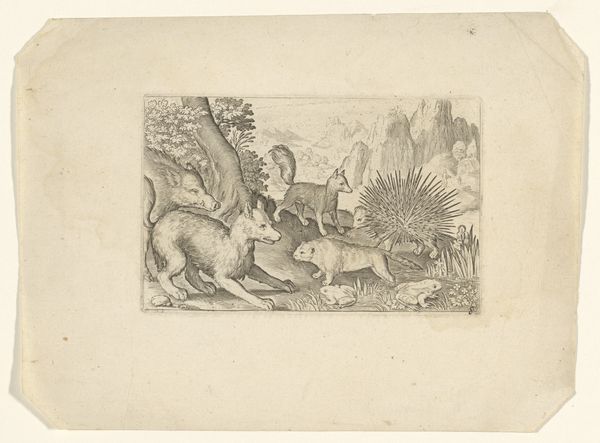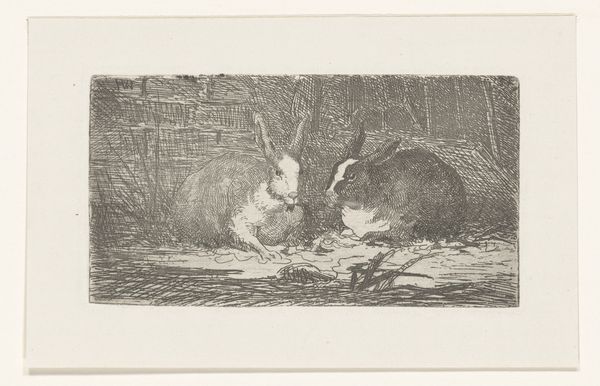
drawing, print, engraving
#
drawing
#
baroque
# print
#
figuration
#
form
#
line
#
history-painting
#
engraving
#
realism
Dimensions: height 96 mm, width 139 mm, height 97 mm, width 139 mm
Copyright: Rijks Museum: Open Domain
Curator: Before us is "Konijnen," which translates to "Rabbits," a print realized by Antonio Tempesta before 1650. It's currently housed in the Rijksmuseum. What catches your eye first? Editor: They look surprisingly glum. It's interesting how lifelike and subdued they are at the same time. The shading makes them weighty somehow, much more present than I'd expect from just a quick animal study. Curator: It is a testament to Tempesta's skills as both a draftsman and an engraver. The Baroque love of realism certainly comes across in the detail, and in how accurately he renders their anatomy and fur. I think the engraving is compelling because animal depictions often carried significant symbolic weight during that time. Editor: What sort of symbolic weight do you mean? Does it relate to the context, say hunting traditions or social roles of the time? Curator: Possibly both. Rabbits, historically, were often seen as symbols of fertility, vulnerability, and even lust. It is also linked with the allegory of the senses, associated with an animal that is attuned to hearing. Think of those enormous ears! Editor: I was just noticing them. Though they look a bit tired, not very attuned at the moment! Seriously, this is an incredibly unromantic rendering. The positioning feels a bit awkward too. Not quite sure what to make of those compressed poses. They seem a bit like visual studies instead of anything more expressive. Curator: Visual studies meant for distribution, that is. Antonio Tempesta was a prolific printmaker, so images like these could have served as references for other artists or as standalone collectible works, similar to how we might collect photographs today. Notice how the two groups are positioned, creating this duality? Editor: You mean with the labeling beneath? Perhaps those are variations on types, meant to suggest two possible renderings? Like how scientific engravings sometimes show variations of the same creature. Interesting to think about printmaking being so intertwined with what would later become "scientific illustration" Curator: Precisely! By employing line techniques characteristic of the Baroque, Antonio achieves not just lifelike figures, but also speaks to broader themes of representation. A piece can reveal historical insights but also speak to an almost anthropological focus. Editor: I really appreciate you framing it this way, now, thinking about dissemination and how information was organized and perceived, I look at these rabbits in a whole new way.
Comments
No comments
Be the first to comment and join the conversation on the ultimate creative platform.
